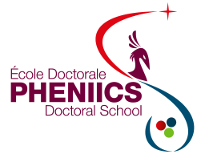Orateur
Mlle
Shifali SINGH
(CEA, Cadarache)
Description
In case of a severe accident scenario in sodium-cooled fast reactors, due to transient over power accident (TOPA) or unprotected loss of flow accident (ULOFA) the fuel might melt generating a hot mixture named corium. When the hot molten fuel (≈ 3000 K) issuing from the degraded core comes in contact with sodium, molten fuel-coolant interaction (FCI) will occur, which can be explosive. The violence of the vapor explosion is strongly linked to the heat exchanges between the melt droplets and the surrounding sodium. Therefore, the knowledge of the local distribution of melt droplets with respect to the local vapor fractions i.e. the three phase distribution (corium, liquid sodium and vapor sodium) is one of the key points.
In an existing facility at CEA Cadarache, named KROTOS dedicated to corium-water interaction; an X-ray radioscopic device and an associated image processing algorithm KIWI have been developed to determine the phase repartition. To obtain an experimental understanding of the behavior of corium in various configurations (interaction with water and also sodium), CEA is building a large scale corium facility PLINIUS 2. In this facility, an X-ray radioscopic device and associated image processing is being developed to visualize and analyze an interaction mechanism of corium with sodium. This research aims at adapting this device to the peculiarities of corium-sodium interaction and in particular to the smaller corium drop/debris sizes formed during the interaction of corium with sodium. Basic idea will be to first design a phantom which will represent corium fragments and will have similar attenuation properties with that of corium. Thus the existing X ray radioscopic device can then be adapted to visualize the phantoms by optimizing its parameters. A physical simulation by pouring a large mass of such phantoms in front of a Linear accelerator can then help in obtaining images. The obtained images can be analyzed by improving the image processing algorithm KIWI and making it suitable to attain an understanding of the phase distribution during corium-sodium interactions.
Auteur principal
Mlle
Shifali SINGH
(CEA, Cadarache)



